Zhilin Chen
High-performance Power Allocation Strategies for Active IRS-aided Wireless Network
Nov 10, 2023Abstract:Due to its intrinsic ability to combat the double fading effect, the active intelligent reflective surface (IRS) becomes popular. The main feature of active IRS must be supplied by power, and the problem of how to allocate the total power between base station (BS) and IRS to fully explore the rate gain achieved by power allocation (PA) to remove the rate gap between existing PA strategies and optimal exhaustive search (ES) arises naturally. First, the signal-to-noise ratio (SNR) expression is derived to be a function of PA factor beta [0, 1]. Then, to improve the rate performance of the conventional gradient ascent (GA), an equal-spacing-multiple-point-initialization GA (ESMPI-GA) method is proposed. Due to its slow linear convergence from iterative GA, the proposed ESMPI-GA is high-complexity. Eventually, to reduce this high complexity, a low-complexity closed-form PA method with third-order Taylor expansion (TTE) centered at point beta0 = 0.5 is proposed. Simulation results show that the proposed ESMPI-GA harvests about 0.5 bit gain over conventional GA and 1.2 and 0.8 bits gain over existing methods like equal PA and Taylor polynomial approximation (TPA) for small-scale IRS, and the proposed TTE performs much better than TPA and fixed PA strategies using an extremely low complexity.
Three High-rate Beamforming Methods for Active IRS-aided Wireless Network
Dec 08, 2022Abstract:Due to its ability of breaking the double-fading effect faced by passive intelligent reflecting surface (IRS), active IRS is evolving a potential technique for future 6G wireless network. To fully exploit the amplifying gain achieved by active IRS, two high-rate methods, maximum ratio reflecting (MRR) and selective ratio reflecting (SRR) are presented, which are motivated by maximum ratio combining and selective ratio combining. Moreover, both MRR and SRR are in closed-form. To further improve the rate, a maximum reflected-signal-to-noise ratio (Max-RSNR) is first proposed with an alternately iterative infrastructure between adjusting the norm of beamforming vector and its normalized vector. This may make a substantial rate enhancement over existing equal-gain reflecting (EGR). Simulation results show the proposed three methods perform much better than existing method EGR in terms of rate. They are in decreasing order of rate performance: Max-RSNR, MRR, SRR, and EGR.
Heterogeneous Transformer: A Scale Adaptable Neural Network Architecture for Device Activity Detection
Dec 19, 2021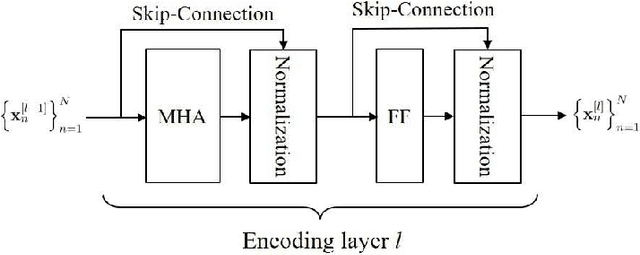
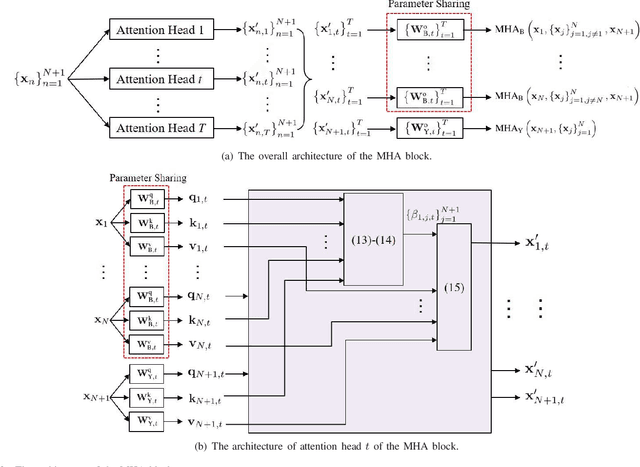
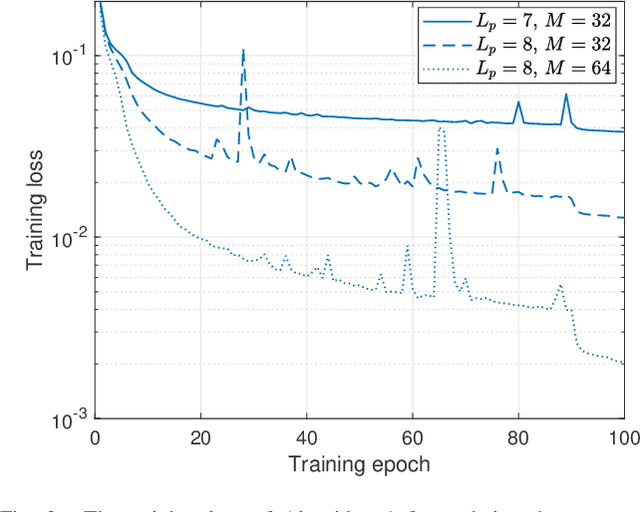
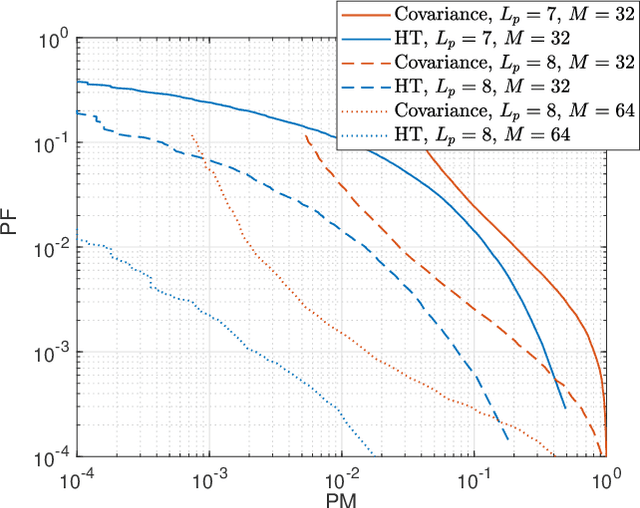
Abstract:To support the modern machine-type communications, a crucial task during the random access phase is device activity detection, which is to detect the active devices from a large number of potential devices based on the received signal at the access point. By utilizing the statistical properties of the channel, state-of-the-art covariance based methods have been demonstrated to achieve better activity detection performance than compressed sensing based methods. However, covariance based methods require to solve a high dimensional nonconvex optimization problem by updating the estimate of the activity status of each device sequentially. Since the number of updates is proportional to the device number, the computational complexity and delay make the iterative updates difficult for real-time implementation especially when the device number scales up. Inspired by the success of deep learning for real-time inference, this paper proposes a learning based method with a customized heterogeneous transformer architecture for device activity detection. By adopting an attention mechanism in the architecture design, the proposed method is able to extract the relevance between device pilots and received signal, is permutation equivariant with respect to devices, and is scale adaptable to different numbers of devices. Simulation results demonstrate that the proposed method achieves better activity detection performance with much shorter computation time than state-of-the-art covariance approach, and generalizes well to different numbers of devices, BS-antennas, and different signal-to-noise ratios.
Accelerating Coordinate Descent via Active Set Selection for Device Activity Detection for Multi-Cell Massive Random Access
Apr 27, 2021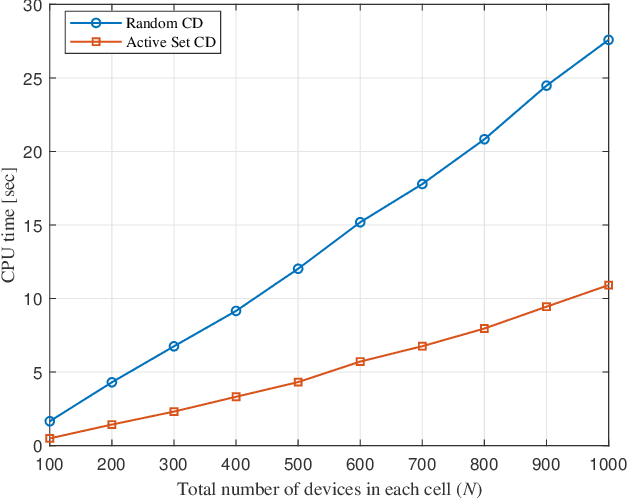


Abstract:We propose a computationally efficient algorithm for the device activity detection problem in the multi-cell massive multi-input multi-output (MIMO) system, where the active devices transmit their signature sequences to multiple BSs in multiple cells and all the BSs cooperate to detect the active devices. The device activity detection problem has been formulated as a maximum likelihood maximization (MLE) problem in the literature. The state-of-the-art algorithm for solving the problem is the (random) coordinate descent (CD) algorithm. However, the CD algorithm fails to exploit the special sparsity structure of the solution of the device activity detection problem, i.e., most of devices are not active in each time slot. In this paper, we propose a novel active set selection strategy to accelerate the CD algorithm and propose an efficient active set CD algorithm for solving the considered problem. Specifically, at each iteration, the proposed active set CD algorithm first selects a small subset of all devices, namely the active set, which contains a few devices that contribute the most to the deviation from the first-order optimality condition of the MLE problem thus potentially can provide the most improvement to the objective function, then applies the CD algorithm to perform the detection for the devices in the active set. Simulation results show that the proposed active set CD algorithm significantly outperforms the state-of-the-art CD algorithm in terms of the computational efficiency.
An Efficient Active Set Algorithm for Covariance Based Joint Data and Activity Detection for Massive Random Access with Massive MIMO
Feb 06, 2021

Abstract:This paper proposes a computationally efficient algorithm to solve the joint data and activity detection problem for massive random access with massive multiple-input multiple-output (MIMO). The BS acquires the active devices and their data by detecting the transmitted preassigned nonorthogonal signature sequences. This paper employs a covariance based approach that formulates the detection problem as a maximum likelihood estimation (MLE) problem. To efficiently solve the problem, this paper designs a novel iterative algorithm with low complexity in the regime where the device activity pattern is sparse $\unicode{x2013}$ a key feature that existing algorithmic designs have not previously exploited for reducing complexity. Specifically, at each iteration, the proposed algorithm focuses on only a small subset of all potential sequences, namely the active set, which contains a few most likely active sequences (i.e., transmitted sequences by all active devices), and performs the detection for the sequences in the active set. The active set is carefully selected at each iteration based on the current detection result and the first-order optimality condition of the MLE problem. Simulation results show that the proposed active set algorithm enjoys significantly better computational efficiency (in terms of the CPU time) than the state-of-the-art algorithms.
 Add to Chrome
Add to Chrome Add to Firefox
Add to Firefox Add to Edge
Add to Edge